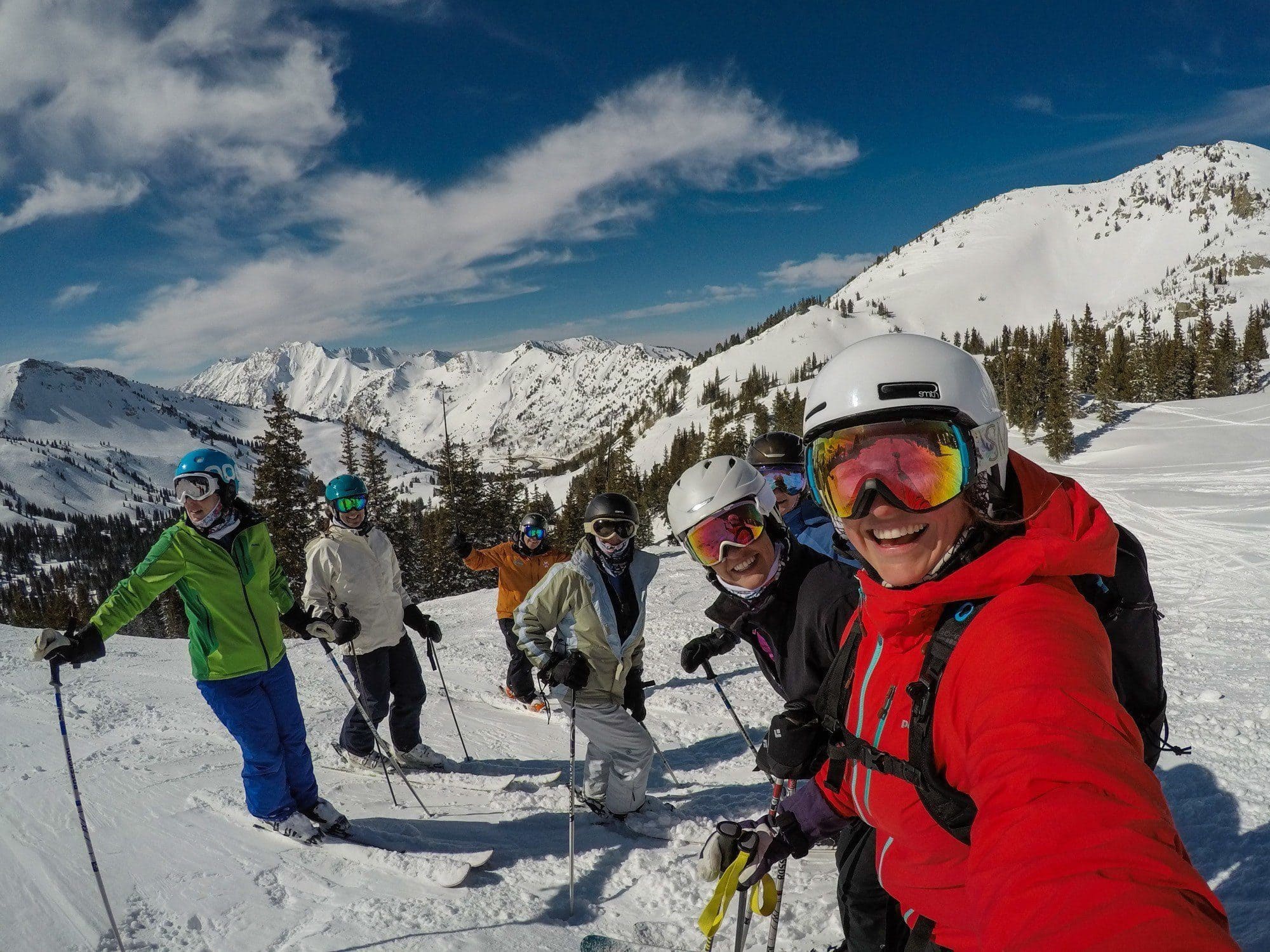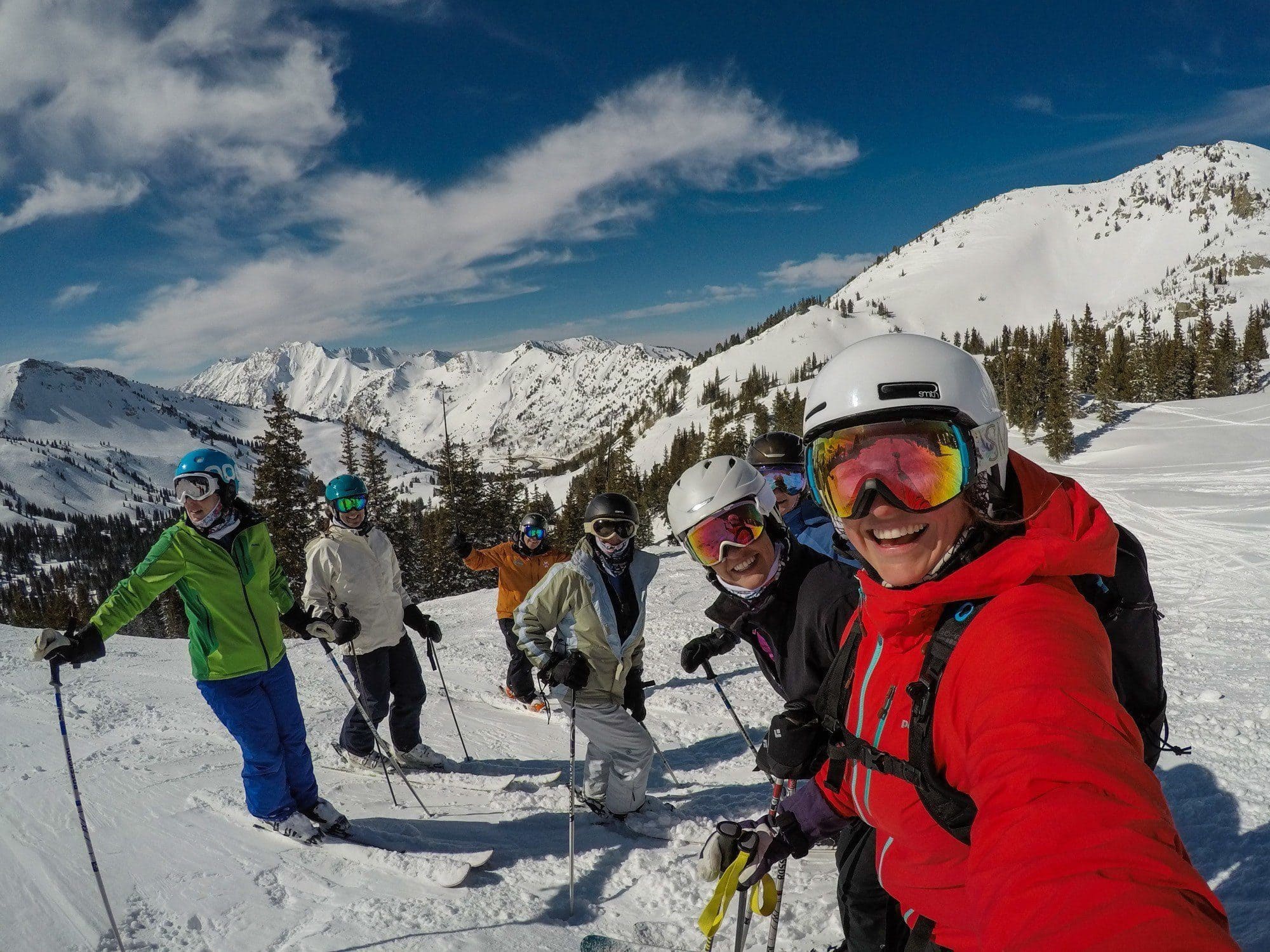The winter cold arrives and with it the possibilities for outdoor sports are drastically reduced. But don’t despair, with the cold also comes the fun of winter sports. And among all of them, skiing is the king.
So if you’ve never been skiing before, maybe you’re thinking of taking advantage of this winter or the upcoming vacations to learn. And you are not the only one. Every year this sport is gaining more and more followers and the options and places to practice it all year round are multiplying.
Like any other sport, learning to ski has its own learning curve. But if you follow these tips, you will probably not only reduce the curve and speed up the process, but it will also be much more fun as a whole.
- The importance of proper ski equipment and clothing.
You may think that you are used to low temperatures or that your natural tan is the best sunscreen on the market. But when it comes to skiing, it is better to apply a good cream (there are specific ones for the mountains) and wear a good ski suit.
Special attention should be paid to gloves (wool gloves are no good here), goggles (you can’t imagine how blinding the reflection of the sun on the very white snow is) and a helmet, which is not only fashionable and available in a wide variety of models, but also a guarantee of safety.
Boots are also a fundamental element. They must be firm, but not too tight. They must fit the foot well, but above all they must be comfortable. There is no room for debate here: you can’t ski with a cousin’s borrowed boots if your size is not the same.
- Can I ski if I am not in shape? Necessary physical preparation
There are two answers here. The short one: yes, of course. And the long one: yes, but with a but. This is none other than the obvious: like any sport, skiing is tiring and requires a minimum of physical fitness to enjoy it.
Skiing tires, and a lot. Being in good shape will not only make the activity easier to learn, but it will also make you enjoy it much more.
Of course, you don’t need to be a bodybuilder or an Olympic athlete to ski. Keeping in good shape is enough. If you are fond of running from time to time and support it with some bodybuilding (squats and push-ups from evening to evening) you will be in the ideal shape to practice this sport (keep in mind that the knees, for example, carry practically all the effort in this sport).
- Take breaks when skiing
And physical effort leads to the need for rest. Whatever your physical profile, it is advisable to take short breaks throughout your skiing day. At most every two hours. But the most advisable is to do it every hour or hour and a half.
- Food: What to eat when we go skiing?
This is one of the favorite points of any first-time skier: you are going to burn so many calories in your first forays into the world of skiing that you can forget about controlling your diet. The low temperature and the intensity of the effort we make when skiing can lead us to burn up to 400 kilocalories per hour.
So always have an energy bar, nuts or some chocolate on hand. Because sugar is almost as essential in the mountains as your own skis. Something that, for sweet addicts like yours truly, helps to make this sport even more addictive.
- Rules of the International Ski Federation (FIS)
In addition to the aforementioned helmet, the best protection for you and your physical well-being is none other than common sense. Starting on the beginner slopes is essential to have a good experience and that your first contact with skiing is not the last.
If you end up liking it and it turns out that you are skilled at sliding on snowy mountains, you will have time to go up a level, improve your technique and dare to take on more difficult slopes.
But when it comes to your first experiences on two boards (or on the snowboard) you’d better go to the beginner slopes and not want to start the house from the roof, because you might regret it.
- The ground is your friend, don’t be afraid of falling.
Exactly as it sounds. If we can give you one good tip on what you should learn first for skiing, it would be this: learn to fall well. And we don’t mean falling “with style”, we mean falling while minimizing risk and damage. If you fall well, you will reduce the damage a lot.
In fact, you must internalize this concept: the ground is your friend. You will quickly realize that the ground is much better than a wall, a tree or another skier.
Dropping to the ground when you lose control of the situation is always the best option. It will help you slow down, and sometimes it will be your easiest way out to avoid an accident.
- Find a ski instructor
There is no better way to learn to ski than under the tutelage of a professional. Fortunately, in our country’s resorts we have great professionals capable of teaching even the most clumsy and fearful of skiers.
But, that said, if you don’t have chemistry with your ski instructor, it is difficult to make progress. The opposite may even be true. Find a teacher that’s right for you, that’s what you’re paying for.
If you are lucky enough to have a friend, family member or acquaintance who can teach you the basics and accompany you on your first descents, why not?
But it must be someone with a lot of patience and who has enough experience to take responsibility for himself and for you during your first runs down the slopes.
Not everyone is good at teaching and does not have the patience to do it. Keep this in mind and you will avoid misunderstandings and bad experiences.
- Control your weight, your posture… and your eyes when skiing.
It seems like a no-brainer, but skiing is basically sliding downhill. This means that the force of gravity and the slope are the main factors in determining our speed as we slide down the snow.
Hence, controlling our weight is critical when skiing. And we don’t mean control based on a balanced diet. We are not referring to a control based on a balanced diet, but on balancing our weight by means of our body posture.
By bending our knees and leaning slightly. It is important to relax the head and also the arms, bringing them slightly forward. Depending on the slope and the speed with which we feel comfortable, we will control our inclination, always looking for a relatively comfortable balance.
- Weather and snow quality
As in any outdoor sport, the weather will determine the quality of our sports day. Especially when it comes to skiing.
A strong blizzard, for example, can almost completely ruin our visibility (and even our balance). Completely ruining the experience. In addition to the difficulty of controlling our body when the wind takes us from one side to another.
Similarly, the quality of the snow can also vary greatly. Whether it is more or less loose or caked influences the way we slide on it. A common type of fall is caused by ice. As we slide much more, it is easy to lose control of our speed on icy stretches.
At this moment we must keep calm to regain control (something similar to what you must do when driving and “aquaplaning” occurs).
- The power of the wedge
It is very likely that, even if you have never skied in your life (and that is precisely why you are reading this article), you have heard of the wedge. It is almost the first lesson when you start skiing, the most “stereotypical” maneuver and one that, without a doubt, allows beginners to quickly distinguish themselves on the ski slopes of the ski resorts.
Descending with the wedge will allow you to slow down and control your speed on the descent. Something that, as we have already indicated in the previous points, is one of the fundamental safety factors. And that, therefore, makes the wedge the most important maneuver (and the first one to learn).


